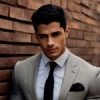The Ho Chi Minh Mausoleum stands as a revered memorial and final resting place of the beloved Vietnamese leader, Ho Chi Minh. Located in the heart of Hanoi, this iconic mausoleum attracts visitors from around the world who come to pay their respects to the revered leader.
In this comprehensive article, we will explore the reasons why a visit to the Ho Chi Minh Mausoleum is a significant and meaningful experience. We will also provide information about its location and route, the ideal time to visit, and the notable features that await your exploration.
Why Visit the Ho Chi Minh Mausoleum?
1. Historical Significance
Ho Chi Minh, also known as Uncle Ho, was a crucial figure in the struggle for Vietnamese independence and reunification. Visiting the mausoleum allows visitors to pay tribute to his legacy and gain a deeper understanding of Vietnam’s history.
2. Cultural Importance
Ho Chi Minh holds a revered status in Vietnamese culture, and his mausoleum serves as a symbol of national pride and unity. A visit to the mausoleum provides insight into the country’s cultural heritage and the values held dear by the Vietnamese people.
3. Architectural Marvel
The mausoleum itself is a remarkable architectural achievement. Its imposing structure, influenced by Soviet architectural styles, showcases grandeur and solemnity, reflecting the importance of the leader it commemorates.
4. Educational Experience
The mausoleum complex offers more than just the opportunity to view Ho Chi Minh’s preserved body. It also houses the Ho Chi Minh Museum, which provides a comprehensive overview of the leader’s life, achievements, and contributions to Vietnam’s struggle for independence.
Location and Route to the Ho Chi Minh Mausoleum
The Ho Chi Minh Mausoleum is situated in Ba Dinh Square, a significant historical and political area in Hanoi. Here are the recommended ways to reach the mausoleum:
- By Air: The nearest airport to Hanoi is Noi Bai International Airport, located approximately 45 kilometers away. From the airport, you can take a taxi or arrange for a private transfer to reach the mausoleum.
- By Land: Hanoi is well-connected by an extensive road network. You can reach the mausoleum by taxi, ride-hailing services, or public transportation from various locations within the city. Local tour operators and travel agencies can assist you in arranging transportation to the mausoleum.
When to Visit the Ho Chi Minh Mausoleum
It is important to note that the Ho Chi Minh Mausoleum has specific visiting hours and is closed on certain days. Here are some considerations for planning your visit:
- Operating Hours: The mausoleum is typically open to the public from Tuesday to Thursday and on weekends, from 8:00 AM to 11:00 AM. It is advisable to check the current schedule and operating hours before planning your visit, as they may be subject to change.
- Public Holidays: The mausoleum is often closed during certain public holidays, so it is essential to verify the opening hours, especially if you plan to visit during such periods.
- Time of Day: Arriving early in the morning is recommended, as the mausoleum tends to get crowded later in the day. This allows for a more peaceful and less crowded experience.
What to See at the Ho Chi Minh Mausoleum
1. The Mausoleum Hall
The main attraction of the complex is the Mausoleum Hall, where the preserved body of Ho Chi Minh lies in state. Visitors have the opportunity to pay their respects and witness this solemn memorial.
2. Presidential Palace
Adjacent to the mausoleum is the Presidential Palace, which served as Ho Chi Minh’s residence from 1954 until his death in 1969. The palace’s exterior and surrounding gardens are open to the public and offer a glimpse into the leader’s living quarters.
3. One-Pillar Pagoda
Located near the mausoleum is the One-Pillar Pagoda, a historic Buddhist temple dating back to the 11th century. Its unique design, with a single pillar supporting the pagoda, makes it a popular spot for visitors to explore.
4. Ho Chi Minh Museum
Within the mausoleum complex, the Ho Chi Minh Museum provides a comprehensive exhibition about the leader’s life, ideology, and contributions. It offers a deeper understanding of his role in Vietnam’s history.
The Ho Chi Minh Mausoleum stands as a significant memorial, paying homage to the revered Vietnamese leader who played a pivotal role in the country’s struggle for independence.
A visit to this solemn site offers visitors the opportunity to pay their respects, gain insights into Vietnamese history and culture, and appreciate the architectural marvels within the complex.
Plan your visit to the Ho Chi Minh Mausoleum, explore its remarkable features, and immerse yourself in the enduring legacy of Ho Chi Minh.








